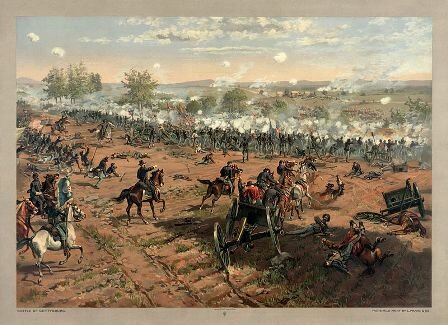For you who love to read history, one of these following facts about the Anglo Saxon period might be interesting to you. The Anglo Saxon period includes the creation of an English nation, with many of the aspects that survive today including regional government of shires and hundreds; the re-establishment of Christianity; a flowering in literature and language; and the establishment of charters and law. The term Anglo-Saxon is also used for the language, more correctly called Old English, that was spoken and written by the Anglo-Saxons in England and eastern Scotland between at least the mid 5th century and the mid 12th century. Furthermore, to get to know more about this period, here are some other facts about the Anglo Saxon period you might be interested in.
Facts about the Anglo Saxon period 1: Cultural Identity
The history of the Anglo-Saxons is the history of a cultural identity, and how this developed from divergent groups, grew with the adoption of Christianity, was used in the establishment of various kingdoms, and, in the face of a threat from Danish settlers, re-established itself as one identity until after the Norman Conquest
Facts about the Anglo Saxon period 2: Outward Appearance
The outward appearance of Anglo Saxon culture can be seen in the material culture of buildings, dress styles, illuminated texts and grave goods. Behind the symbolic nature of these cultural emblems there are strong elements of tribal and lordship ties, and an elite that became kings who developed burhs, and saw themselves and their people in Biblical terms.
Facts about the Anglo Saxon period 3: Term Use
Use of the term Anglo-Saxon assumes that the words Angles, Saxons or Anglo-Saxon have the same meaning in all the sources. Assigning ethnic labels such as “Anglo-Saxon” is fraught with difficulties and the term itself only began to be used in the 8th century to distinguish “Germanic” groups in Britain from those on the continent.
Facts about the Anglo Saxon period 4: Alternative Names
Alternatives names would have been ængli, Seaxe, or more probably a local or tribal name such as Mierce, Gewisse, Westseaxe or Norphanhymbre. Also, the use of Anglo-Saxon disguises the extent to which people thought of themselves as Anglo-Scandinavian after the Viking age or the conquest of 1016, or Anglo-Norman after the Norman conquest.
Facts about the Anglo Saxon period 5: Early History
The early Anglo-Saxon period covers the history of medieval Britain that starts from the end of Roman rule. It is a period widely known in European history as the Migration Period, also the “migration of peoples” in Germany, and was a period of intensified human migration in Europe from about 400 to 800.
Facts about the Anglo Saxon period 6: Development of the Society
In the last half of the 6th century four structures were having a bearing on the development of society, they were: the position and freedoms of the ceorl, the smaller tribal areas coalescing into larger kingdoms, the elite developing from warriors to kings, and Irish monasticism developing under Finnian and his pupil Columba.
Facts about the Anglo Saxon period 7: Life and Society
The larger narrative, seen in the history of Anglo-Saxon England, is the continued mixing and integration of various disparate elements into one Anglo-Saxon people. The outcome of this mixing and integration was a continuous re-interpretation by the Anglo-Saxons of their society and worldview, which Heinreich Härke calls a “complex and ethnically mixed society”
Facts about the Anglo Saxon period 8: Agriculture
Early Anglo-Saxon buildings in Britain were generally simple, not using masonry except in foundations but constructed mainly using timber with thatch for roofing. Generally preferring not to settle within the old Roman cities, the Anglo-Saxons built small towns near their centres of agriculture, at fords in rivers or sited to serve as ports.
Facts about the Anglo Saxon period 9: Art
Early Anglo-Saxon art, as it survives, is seen mostly in decorated jewellery, like brooches, buckles, beads and wrist-clasps, some of outstanding quality. Characteristic of the 5th century is the quoit brooch with motifs based on crouching animals, as seen on the silver quoit brooch from Sarre, Kent. While the origins of this style are disputed, it is either an offshoot of provincial Roman art, Frank, or Jute art.
Facts about the Anglo Saxon period 10: Language
Old English or Anglo-Saxon is the early form of the English language that was spoken and written by the Anglo-Saxons and their descendants in parts of what are now England and southern and eastern Scotland between at least the mid-5th century and the mid-12th century.
Hope you would find Anglo Saxon period facts interesting, useful and helpful for your additional reading.









